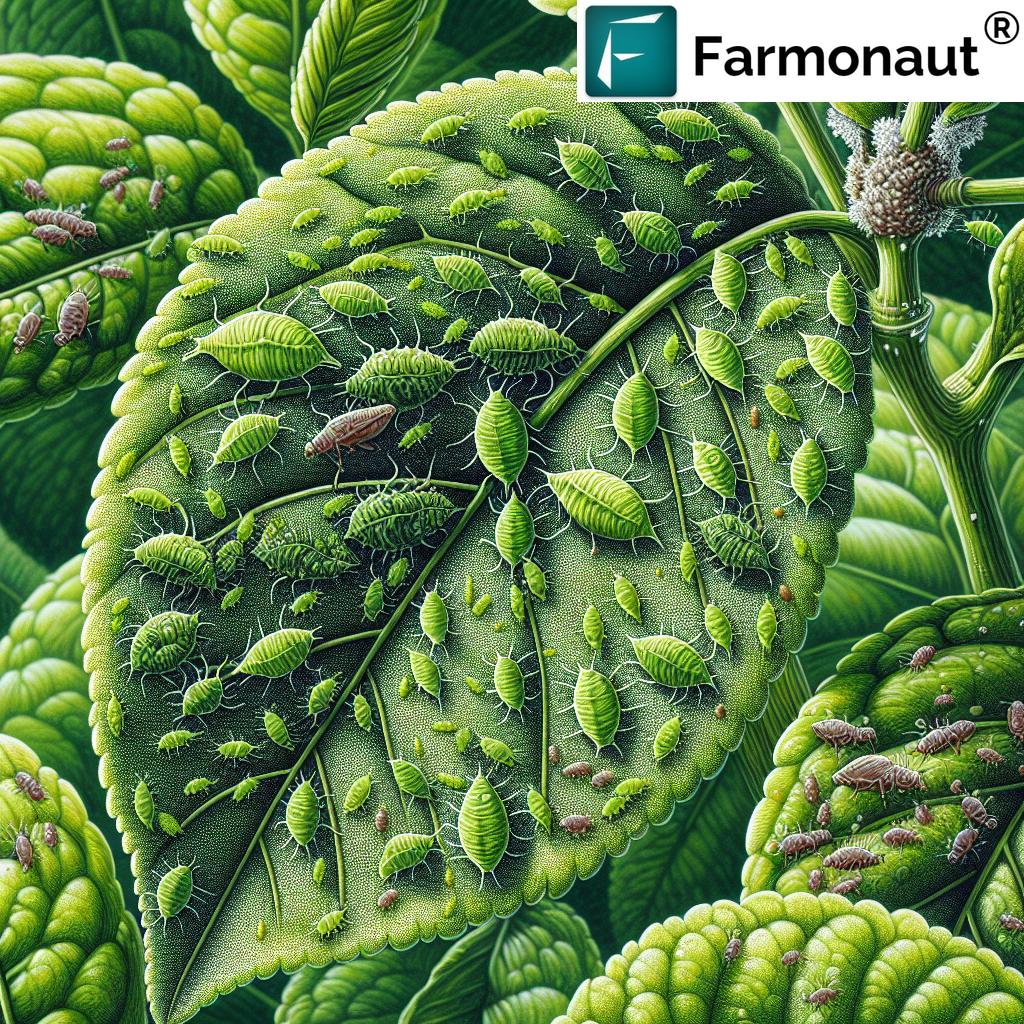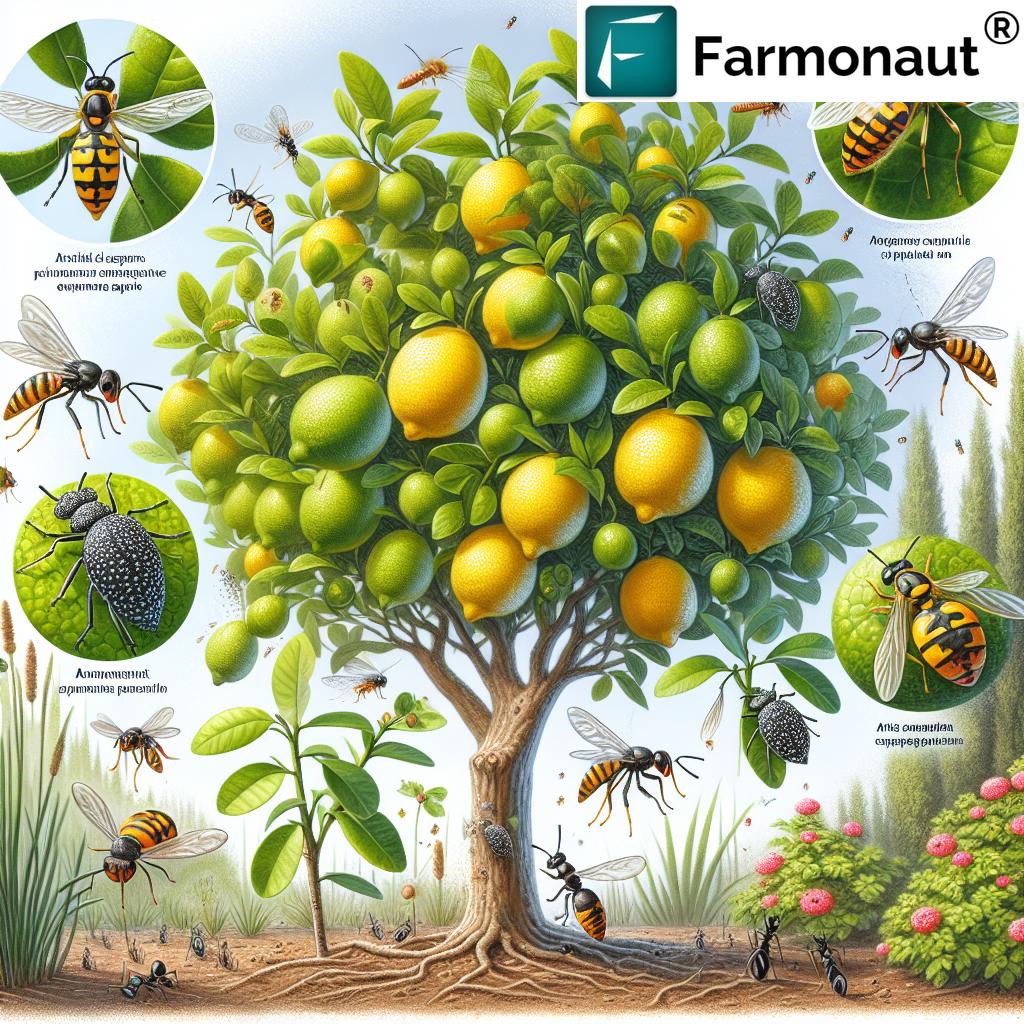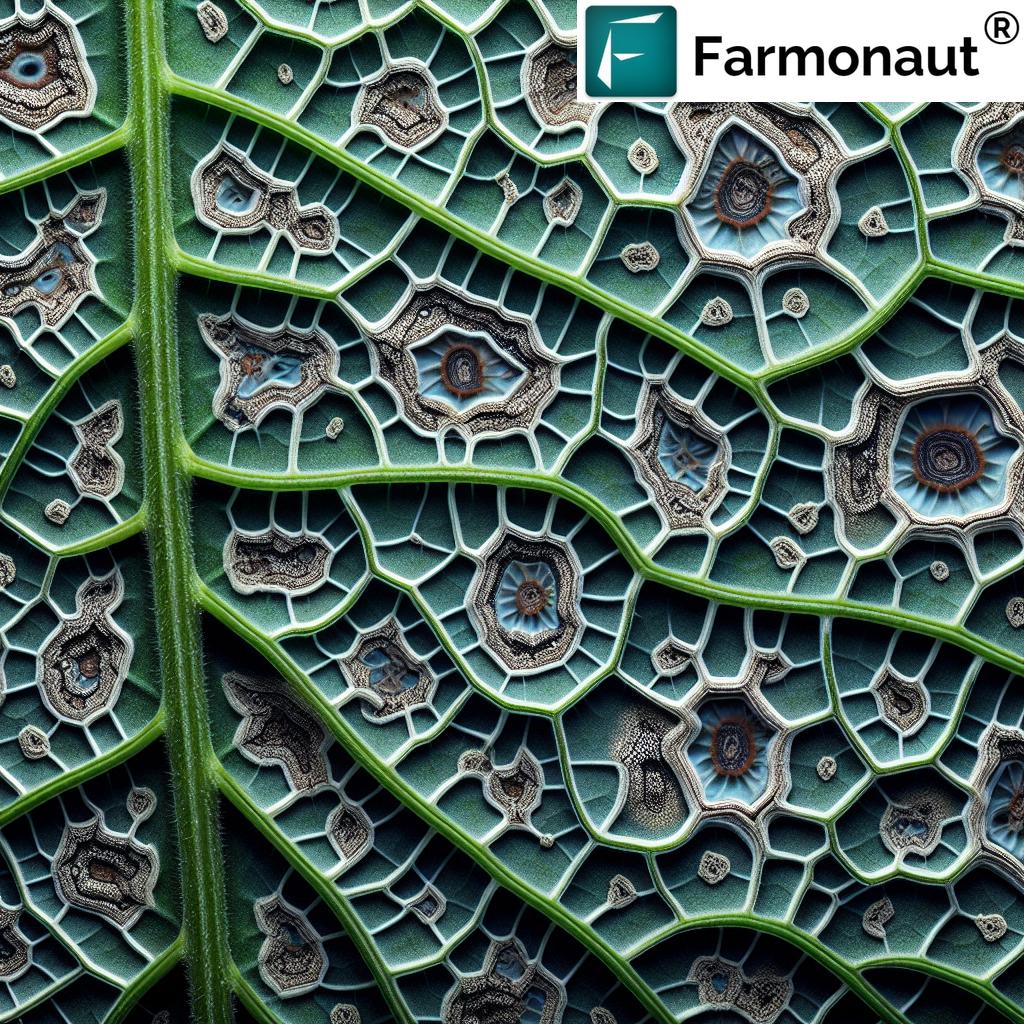Aphids Lemon Tree: 7 Proven Strategies for Effective Control
“Up to 80% of lemon tree yield loss can be caused by unchecked aphid infestations.”
Understanding Aphid Infestations on Lemon Trees: Identification, Impact, and Management Strategies
Lemon trees, valued for their aromatic fruits and glossy foliage, are frequently challenged by aphid infestations. These tiny, sap-sucking insects—common among lemon tree pests—can threaten the health, vigor, and productivity of citrus orchards. This comprehensive resource demystifies aphid identification, delves into their impact on lemon tree health, and covers proven strategies (cultural, biological, chemical, and preventive) for effective aphid infestation management.
Aphids are a primary concern among lemon tree pests. Effective aphid identification and prompt management are crucial to prevent damage from these insects. In this article, we discuss how to control aphids on lemon trees, outlining seven proven strategies for healthier, more productive citrus trees.
Aphid Identification on Lemon Trees
To implement successful aphid infestation management, early and accurate aphid identification is vital. Aphids, which vary in color from green to black or brown, are commonly found on the undersides of leaves, new shoots, and flower clusters of lemon trees.
Key Indicators of Aphid Presence on Lemon Trees
-
Distorted Growth: Aphid feeding causes leaves to curl, twist, or become misshapen, often leading to stunted trees and compromised
photosynthetic activity. - Yellowing Leaves: Loss of chlorophyll due to aphid feeding leads to chlorosis, which appears as yellowing foliage.
-
Sticky Residue: Aphids excrete a sugary honeydew substance. This sticky residue on leaves and
fruit can encourage the development of sooty mold on citrus leaves. - Ants on the Tree: Ants farm aphids for their honeydew. The unsual presence of ants around the tree or in large clusters can be a strong indicator of an aphid infestation.
Additional signs include wilting new growth, reduced fruit set, and sometimes the direct presence of aphid larvae on the youngest tissues of lemon trees. Orchard monitoring should focus on the undersides of leaves and around flower clusters, where infestations typically begin.
The Impact of Aphids on Lemon Trees
Unchecked aphid infestations can dramatically impact the growth, health, and productivity of lemon trees. Understanding these effects is essential for developing effective control strategies.
Nutrient Depletion and Growth Suppression
- By feeding on plant sap, aphids extract essential nutrients, which can weaken the tree, reduce its vigour, and lead to stunted growth.
- Distorted new leaves and twisted shoots result in lower photosynthetic capacity, contributing to reduced fruit set and overall yield.
Disease Transmission by Aphids
- Aphids are known vectors of serious plant viruses, including the citrus tristeza virus—especially spread by the black citrus aphid (Toxoptera citricidus). Such diseases can cause dieback and even death of lemon trees.
Sooty Mold and Secondary Fungal Infections
- The honeydew excreted by aphids is a food source for fungi, including sooty mold. Sooty mold on citrus leaves can form a black, powdery coating over leaves and fruit, blocking sunlight and affecting the plant’s ability to photosynthesize.
Over time, severe infestations may reduce fruit yield and quality by as much as 80%, making timely and effective aphid management essential for healthy lemon tree growth and orchard productivity.
“Introducing ladybugs can reduce aphid populations on lemon trees by over 60% within two weeks.”
1. Cultural Practices for Aphid Control on Lemon Trees
A cultural approach is the foundation of sustainable aphid control in lemon orchards. Cultural practices for aphid control are non-chemical methods that focus on creating an environment less conducive to aphid infestations. These strategies are safe for pollinators, labor-friendly, and support the natural resilience of trees.
Key Cultural Controls
- Regular Monitoring: Conduct weekly inspections of the undersides of leaves, new shoots, and flower clusters. Early detection enables prompt action to minimize infestation.
- Pruning Infested Branches: Prune and destroy heavily infested or damaged shoots and leaves. This reduces aphid populations and improves air flow, lowering overall humidity.
- Balanced Fertilization: Avoid excessive nitrogen fertilization, which stimulates lush new growth especially susceptible to aphids. Instead, use a balanced fertilizer appropriate for citrus.
- Proper Plant Spacing: Space lemon trees and surrounding plants adequately to increase sunlight penetration and air circulation, two environmental factors that reduce aphid survival and spread.
- Water Management: Avoid both water-stressed and excessively wet soils to maintain robust, healthy growth.
Why Are Cultural Controls Crucial?
- Roots out the main causes: By improving general horticultural practices, we reduce the likelihood of infestations starting in the first place.
- Cost-effective: Pruning and monitoring require little to no cash outlay compared to chemical alternatives.
- Supportive of beneficial insects and microbiota: These controls avoid indiscriminate harm to non-target organisms.
2. Biological Control of Aphids: Harnessing Natural Predators
Biological control of aphids is a sustainable, ecosystem-friendly technique for managing aphids on lemon trees. Natural predators of aphids are incredibly effective at reducing aphid populations without chemicals. Encouraging or introducing these beneficial insects supports both the orchard’s biodiversity and its productivity.
Natural Predators of Aphids
- Ladybugs (Ladybird Beetles): Voracious consumers of aphids. Both adult and larvae can consume hundreds of aphids per day, with a single ladybug potentially eating up to 5,000 aphids in its lifetime.
- Hoverflies: The larvae stage preys on aphids, while adults assist with pollination.
- Lacewings: Nicknamed “aphid lions”, lacewing larvae are significant aphid predators.
- Parasitic Wasps (e.g., Aphidius colemani): Lay eggs inside aphids; larvae consume the aphid from within, drastically reducing aphid numbers.
Companion Planting to Attract Natural Enemies
- Plant dill, fennel, or marigold as companion plants around lemon trees. These plants attract beneficial insects like hoverflies and ladybugs that prey on aphids.
Encourage a diverse garden ecosystem to support sustained natural control over multiple seasons.
3. Chemical Controls for Aphid Infestation
While biological and cultural strategies are preferred for ecology and safety, chemical controls sometimes play a role in severe or persistent aphid infestations. When choosing this route, always opt for interventions that reduce non-target impact and are compatible with other control measures.
Common Chemical Control Methods
- Insecticidal Soaps: Disrupt aphid cell membranes and cause dehydration, killing them on contact. Use in the coolest part of the day to minimize phytotoxicity.
- Neem Oil: This botanical oil (traceable with Farmonaut’s product traceability solution for sustainable sourcing) disrupts insect feeding and breeding. Dilute according to label directions and apply thoroughly to all affected foliage.
- Horticultural Oils: Suffer aphids (and their eggs) by coating their bodies. Dormant application or early in the infestation ensures greater efficacy and minimizes damage to trees.
How to Apply Chemical Controls Effectively
- Always follow label directions and avoid using broad-spectrum insecticides that harm natural predators.
- Apply when beneficial insects are least active (early morning or late afternoon).
- Repeat treatments as new aphid generations emerge, if necessary.
- Monitor foliage after application for signs of phytotoxicity (leaf burn, droop, chlorosis).
Chemical controls are a strategic part of integrated management, but should never be the only tool used. Overreliance can create resistance in aphid populations and diminish beneficial insect numbers.
For agritech developers and research institutions, Farmonaut’s API offers access to up-to-date, satellite-based crop and orchard health data for aphid and pest monitoring.
Use Farmonaut’s fleet management tools to efficiently organize orchard operations, from targeted foliar spray application to scheduled monitoring visits.
Detailed documentation for the Farmonaut Satellite & Weather API is available for building scalable agritech applications.
Preventing Aphids on Lemon Trees: Integrated Strategies
Preventive measures are key to orchard sustainability. The best approach is an integrated pest management (IPM) plan—blending monitoring, cultural control, and biological solutions for lasting results.
Top Preventive Steps for Aphid Infestion Management
- Maintain Lemon Tree Health: Healthy plants have stronger natural defenses. Ensure proper irrigation, adequate fertilization, and routine monitoring.
- Encourage Biodiversity and Soil Health: Create a garden ecosystem that supports pollinators, predators, and beneficial microorganisms.
- Avoid Overcrowding: Optimize plant spacing to lower humidity and boost air flow.
- Introduce Companion Plants: Establish an understorey of plants that attract natural aphid predators.
- Monitor for Signs of Disease: Aphids transmit viruses; monitor for unusual wilting, leaf drop, or sudden yellowing. Remove and destroy diseased plant parts promptly.
Comparison of Aphid Control Strategies for Lemon Trees
| Strategy | How It Works | Estimated Effectiveness (%) | Approx. Cost ($) | Time to See Results (Days) | Environmental Impact |
|---|---|---|---|---|---|
| Introducing Natural Predators (Ladybugs) | Ladybugs, lacewings, hoverfly larvae feed on aphids, reducing populations rapidly | 60–90% | 10–40 per release | 7–14 | Low |
| Neem Oil Spray | Disrupts aphid feeding and reproduction; safe for most beneficial insects | 70–85% | 15–25 per bottle | 3–7 | Low |
| Water Blast (Jet Spray) | Physical removal of aphids from leaves and shoots with a strong water jet | 40–70% | Minimal | 1–2 | Low |
| Pruning & Removal | Cutting off infested parts to directly reduce aphid populations and limit spread | 50–75% | Minimal | 1–2 | Low |
| Insecticidal Soap | Disrupts aphid cell walls, causes dehydration and rapid death | 70–90% | 10–20 per bottle | 2–3 | Low |
| Horticultural Oil | Suffocates aphids & eggs, applied during dormant or growing season | 60–80% | 15–30 per bottle | 2–5 | Medium |
| Companion Planting | Draws in natural predators (via dill, fennel, marigolds) and strengthens biodiversity | 40–60% | Variable | 14–30 | Low |
Leveraging Farmonaut for Aphid Infestation Management and Health Monitoring
For orchardists and lemon tree growers, timely decision-making is essential to manage aphid infestations before they escalate. That’s where Farmonaut can be a game-changer. We at Farmonaut empower growers with affordable, satellite-based crop monitoring and integrated advisory tools that support proactive aphid and pest management:
- Satellite-based Crop Health Monitoring: Our platform utilizes multispectral satellite imagery to detect areas of stress (potential yellowing, stunted growth, or disease) in real time, helping you target orchard zones for more detailed aphid quantification or control efforts.
- AI-Powered Advisory: Farmonaut’s Jeevn AI system interprets satellite data and gives personalized farm management tips—including pest, water, and nutrient advice.
- Traceability and Sustainability: Use our blockchain-based traceability solutions to verify lemon fruit supply chain integrity and eco-friendly pest management practices.
- Resource Optimization: Optimize spray applications, irrigation, and nutrition using real crop and soil data—reducing costs and environmental impact.
Our solutions bridge traditional expertise and cutting-edge technology—making it easier than ever to implement holistic, data-driven strategies for aphid infestation control and citrus orchard health.
Frequently Asked Questions (FAQs): Aphids on Lemon Trees
How do I identify aphid infestation on lemon trees?
Look for clusters of small, soft-bodied insects (often green, black, or brown) on the undersides of leaves, new shoots, and flower clusters. Other signs include curled or twisted leaves, sticky honeydew, and associated sooty mold growth. The presence of ants ‘farming’ the aphids is another common indicator.
What is the best natural method to control aphids on lemon trees?
Encouraging or releasing ladybugs and lacewings is highly effective. Companion planting (such as dill, fennel, or marigold) also attracts natural predators. Use water jet sprays and regular pruning for non-chemical control.
How does aphid feeding affect lemon fruit yield?
Aphid infestations can cause nutrient depletion, distorted new growth, transmission of plant diseases, and the development of sooty mold—all of which can reduce lemon fruit quality and potentially decrease yield by up to 80% if unmanaged.
Is neem oil safe for lemon trees and beneficial insects?
Neem oil is generally safe when used as directed and is less harmful to beneficial insects than broad-spectrum pesticides. Always avoid applying during peak pollinator activity and follow dilution guidelines closely.
Does proper plant spacing really help reduce aphid infestations?
Yes. Proper spacing between plants reduces humidity and increases airflow, making conditions less ideal for aphid proliferation and discouraging secondary fungal growth like sooty mold.
Can Farmonaut help me monitor aphids or tree stress remotely?
Absolutely. We at Farmonaut offer real-time, satellite-based monitoring that highlights areas of stress (such as those caused by aphids, diseases, or nutritional deficiencies), allowing for timely and targeted intervention in citrus orchards.
What are the main risks of overusing chemical controls for aphids?
Overuse of chemicals can lead to aphid resistance, harm to natural predators, pollution, and in some cases, damage to foliage and fruit. Integrated pest management strategies limit these risks.
Conclusion: Achieving Effective Aphid Control for Healthy Lemon Trees
Aphid infestations are a major threat to lemon tree health and productivity, but through vigilant identification, understanding of their impact, and the adoption of a well-rounded management plan incorporating cultural, biological, chemical, and preventive strategies, robust control is achievable. By regularly monitoring lemon trees, fostering natural predator populations, optimizing cultural practices, and using safe targeted controls when necessary, growers can protect both their harvest and the long-term health of their citrus trees.
Embracing smart technologies like Farmonaut’s satellite-based crop health monitoring and advisory tools further enhances pest management, orchard sustainability, and operational efficiency. With these seven proven aphid control strategies, your lemon orchard can flourish—yielding aromatic fruit and glossy foliage for years to come.

















